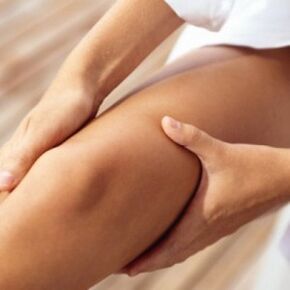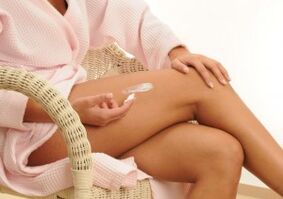
Varicose veins in the legs are a pathological condition that almost everyone experiences - despite the fact that fair sexes are more often affected by the condition, men often experience serious, life-threatening complications (thrombosis and blood clots)embolism).
For the treatment of varicose veins today, both topical and oral medications are available. Creating an effective treatment for varicose veins is the dream of every specialist facing this problem, or a pharmaceutical company working on drugs that affect the state of the vessel wall and blood properties - such a treatment always requires patients withpatients with this disease.
Many people rashly think that varicose veins in the legs are just a cosmetic problem that prevents them from wearing certain types of clothing or limits a person's function, but doctors who deal with the problem say the complications can be dire for patients.
Symptoms of varicose veins - what you need to watch out for
Every vascular surgeon or phlebologist who consults a patient with symptoms of this disease can say that in the vast majority of cases, when leg varicose veins are only present, but already in the obvious stage, the patient will not come to consult. changes or complications. Leg vein swelling becomes apparent at this stage, but the first symptom that indicates progression of vascular disease in the lower extremity venous bed is nighttime leg fatigue.
Unpleasant sensations may occur after prolonged upright posture, and in the same cases, twitching may occur at night, with swelling of the subcutaneous tissue in the lower body (most commonly in the feet and legs). Quite often, fair sex complains that the veins in the legs only become very noticeable during pregnancy or after the onset of menopause (in which case the onset of symptoms is often accompanied by other signs of hormonal imbalance).
It is important to remember that a lump on a leg vein indicates that the disease has transitioned from an initial stage of change to a nutritional disorder, which already requires access to the entire arsenal of drugs used to treat varicose veins. If the patient has varicose veins, it is notThe symptoms of the disease should be ignored, because with the development of varicose veins, not only the conditions of blood circulation in the veins are destroyed, but also the rheological properties of the blood (a sharp increase in its coagulation and the appearance of blood clots in the vessels). This is why, when a blood clot ruptures, thromboembolism of various organs, including the cerebrovascular or pulmonary arteries, occurs, posing a fatal risk to the patient's life - the development of this condition will require urgent and intensive treatment.
Can varicose veins be cured?

If a patient is diagnosed with leg varicose veins, the condition of the tissues of the lower extremities as well as the condition of the systemic circulatory system and the possibility of preventing complications of this pathological condition will depend on early diagnosis and prompt comprehensive treatment. If a doctor detects varicose veins in the legs, treatment is only selected if:
- Study the disease history and the patient's chief complaint;
- Clinical and biochemical blood tests, which will necessarily include the implementation of coagulation maps and tests to detect threatening hemostasis violations and a high likelihood of thrombosis;
- Ultrasound scan of the blood vessels of the lower extremities to force blood flow velocity (Doppler angiography);
- Angiography of blood vessels suspected of deep vein injury in the legs.
The main ingredients in the treatment of varicose veins are the use of:
- a thoughtful diet;
- use of traditional medicine;
- prescribed topical and systemic drug therapy;
- Apply modern surgical treatment methods.
Nutrition for varicose veins should be as balanced as possible and overweight corrected as much as possible. The patient's diet should contain sufficient amounts of animal-derived protein, along with meat from young animals or a variety of seafood—the only foods that allow adequate amounts of elastin (the protein necessary to restore the walls of veins) to enter the blood vessels. Body. It is important to eat enough vegetables and fruits, which will be a source of vitamins and prevent constipation.
Treating varicose veins with leeches simultaneously pursues several goals, chief among them being access to the body's potent natural anticoagulants and affecting the body's biologically active points responsible for regulating vein tone. This treatment should be performed by a qualified specialist with experience using leech therapy.
If a patient initially suffers from varicose veins, folk recipes proven over hundreds of years will help slow the progression of changes. Horse chestnut extract is popular for oral administration in decoction and infusion form, as well as formulations for topical application. Horsetail grass, moss, dandelion, verbena, peony, raspberry, sweet clover, rue are used to treat varicose veins - and numerous recipes have been created for them.
In the vast majority of cases, tablets for varicose veins are purified substances obtained from traditional medicine. Of course, this treatment works much faster than decoctions and infusions, but the cost of this treatment is many times higher. In addition, drugs that affect vascular tone and coagulation function can be used when necessary, but must be approved by the doctor.
Laser Treatment
Laser treatment of varicose veins is emerging as an effective and modern low-invasive surgical intervention - treating the affected blood vessel with a laser ("welding") results in cessation of blood flow and desolation of the vessel. This reduces the severity of cosmetic defects, which are very evident in varicose veins, but does not affect the cause of the disease and its mechanism of development. That is why this treatment can be used as an integral part of a complex treatment of varicose veins in the body and its special case - varicose veins of the lower extremities.

















